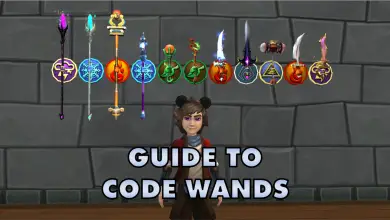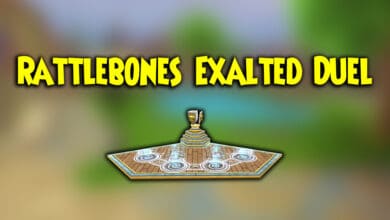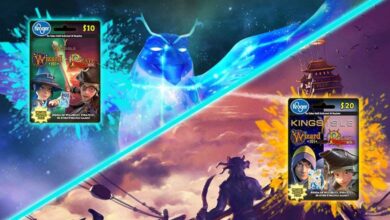Wizard101 Nightmare Dungeon Ultimate Guide!🧙♂️
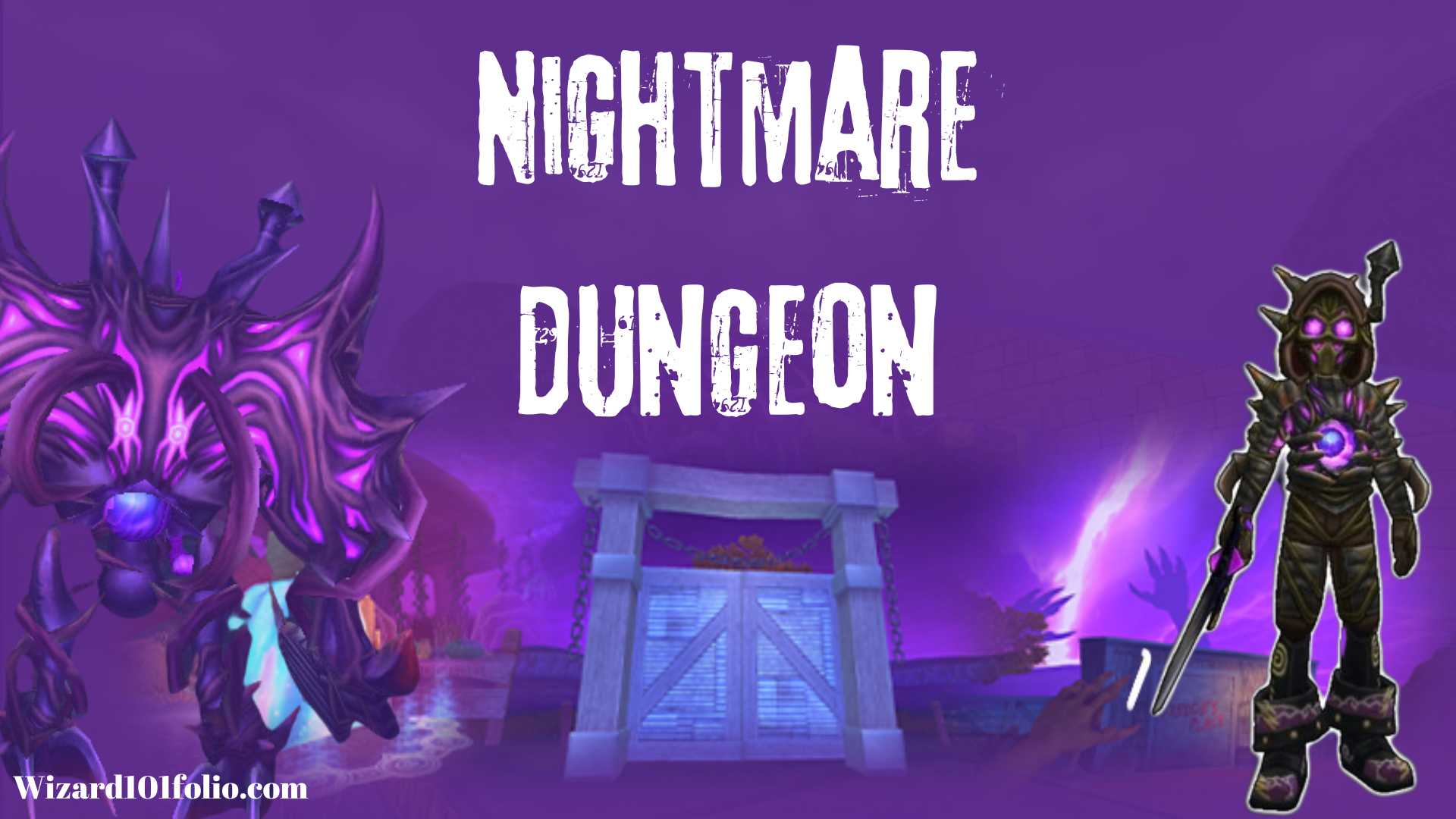
The Nightmare Dungeon in Wizard101 is a complex and challenging end-game activity designed to test the skills, strategy, and teamwork of players. It is set in a maze-like environment filled with tough minions, intricate puzzles, and powerful bosses, each possessing unique cheats and mechanics that require careful planning and execution to overcome.
Table of Contents
Overview of the Nightmare Dungeon
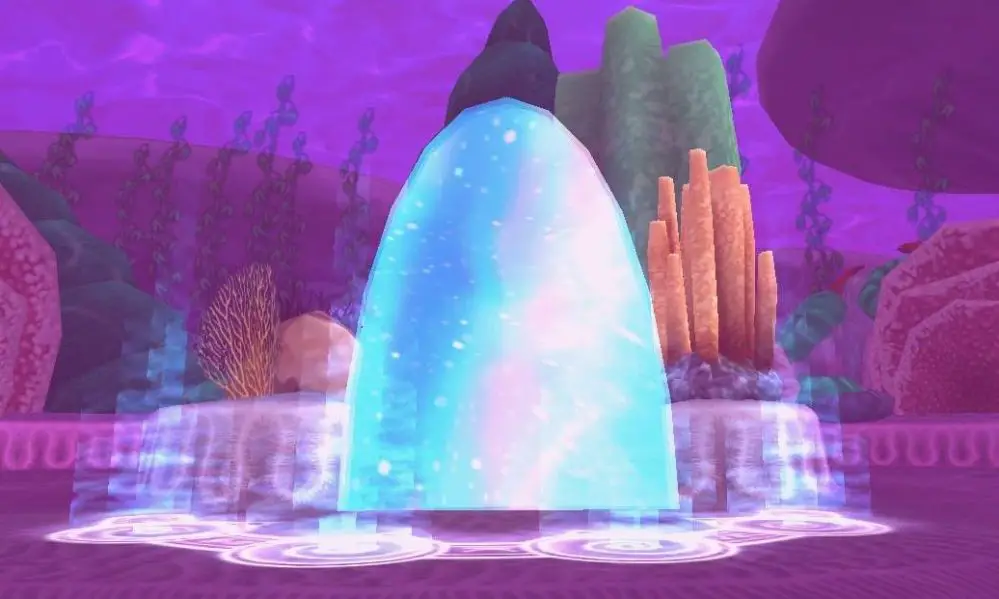
The Nightmare Dungeon is introduced as a significant challenge within the game, offering players a mix of combat, navigation, and puzzle-solving elements, it was introduced later after the Wallaru update. It consists of several key components:
- Minion Fights: Before tackling the main bosses, players must defeat minions in teleporter-based fights. Each minion has over 11,000 health and specific cheats that necessitate tailored strategies.
- A Maze: Players must navigate through a maze, avoiding obstacles known as Broken Dreams, to reach various boss fights and complete objectives.
- Boss Fights: The dungeon features major boss battles against characters such as Pharaoh Rama-Krok and Didgeri-Dragon, each with their unique set of cheats and a high health pool, notably with Malus as the final boss, who has 150,000 health.
- Puzzles and Mechanics: Successfully completing the dungeon requires collecting Dream Water to deal with sleepers blocking the way to the final boss, alongside managing a puzzle that involves setting symbols based on bosses’ secondary schools.
Importance of Team Composition
The complexity and difficulty of the Nightmare Dungeon underscore the critical importance of team composition. It is emphasized that success in the dungeon relies heavily on having a well-rounded team that can effectively respond to the various cheats and mechanics presented by bosses and minions. Key points include:
- Diverse Roles: A balanced team with members capable of fulfilling roles such as damage dealer, support for buffs and healing, and utility for countering bosses’ cheats is essential.
- Counter Abilities: Certain boss fights require specific counters, such as the ability to counter heal over times (HoTs), damage over times (DoTs), and various shield and weakness applications. Having team members equipped with spells and abilities to manage these cheats is crucial.
- Communication: Effective communication and coordination among team members are vital to navigate the maze, strategize for fights, and efficiently manage dungeon mechanics.
Required Gear and Stats
Accuracy and Pierce:
- Players should focus on achieving high accuracy to counteract the dungeon’s prevalent mantle cheats. This is particularly crucial for avoiding the frustration of fizzling spells under pressure. For instance, equipping gear that boosts accuracy, such as City Staffs for their accuracy benefits, can make a significant difference.
- Adequate pierce stats are also essential, particularly for penetrating the defenses of bosses like Malus, who has substantial resistance. Aiming for around 56 pierce or more ensures that attacks penetrate effectively, considering Malus’s resistance levels.
Damage and Resistance:
- High damage boosts are recommended to meet the health pool challenges presented by bosses, especially given Malus’s 150k HP in the final fight. Players should optimize their gear for maximum damage output.
- Equipping gear that offers good resistance can provide a safety net against the dungeon’s harder-hitting attacks, ensuring survival through tougher battles.
Recommended Team Composition
Diverse Schools for Balanced Roles:
- A balanced team, ideally comprising members from different schools, allows for a strategic approach to combat. For example, having a Fire and Storm wizard can diversify the team’s attack strategies, with Fire focusing on DoT (Damage over Time) and Storm providing heavy single-target damage.
- Roles should be clearly defined, with at least one player dedicated to support, capable of casting essential utility spells like cleanse, pierce, or shatter, alongside their regular buffing responsibilities.
Utility and Support Focus:
- The inclusion of a Myth wizard for their utility spells like Shatter can prove invaluable, especially against bosses like the Dragon, where removing shields efficiently is crucial.
- A Life wizard or any class capable of significant healing and support can bolster the team’s endurance, making it possible to withstand prolonged encounters.
Essential Spells and Cards
Counters and Cleanses:
- Spells such as Shatter or Pierce are indispensable for dealing with shield-heavy opponents. Support players should have multiple copies of these spells to counteract bosses’ shielding cheats effectively.
- Cleanse Charm is vital for removing debilitating weaknesses or mantles, ensuring the team’s heavy hitters can execute their attacks without hindrance.
Damage Amplifiers and Protection:
- Faints and blades are essential for amplifying damage against bosses. The team should coordinate the stacking of these spells to maximize their attack potency.
- Shielding spells and protection spells like Legion Shield can help mitigate incoming damage, providing a buffer that can be the difference between victory and defeat.
Specialized Utility:
- For specific bosses, spells that counteract unique cheats (e.g., Snow Drift for HOTs or Triage for DOTs) are essential. Players must tailor their decks to the anticipated challenges, ensuring they have the right tools for each encounter.
- Having pets with useful maycast abilities or carrying gear that provides additional spell cards can offer a strategic advantage, offering more flexibility and options during combat.
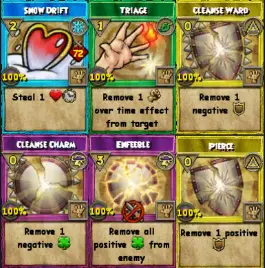
Nightmare Dungeon Mechanics
Broken Dreams Mechanic
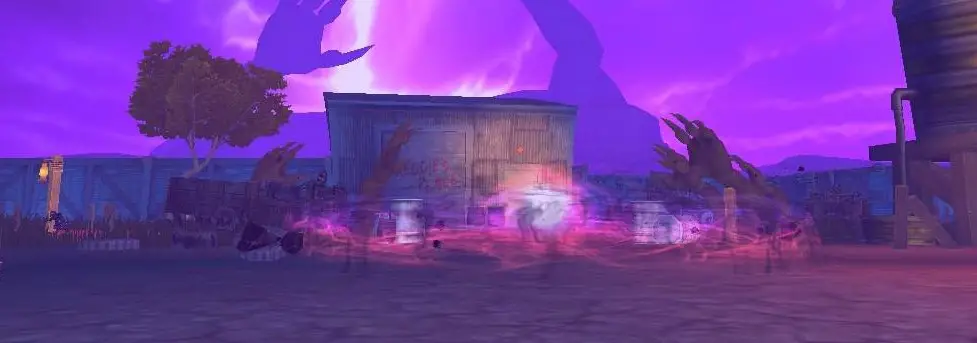
- Purpose: The “Broken Dreams” mechanic serves as an obstacle or hazard that players must navigate around or avoid entirely within the dungeon. Its primary function is to introduce an element of risk and strategy to the movement within the dungeon environment.
- Effect on Players: If a player comes into contact with a “Broken Dream,” they are penalized by being sent back to the start of the dungeon or to a specific checkpoint. Additionally, this interaction results in the loss of HP (health points), further increasing the penalty for failing to avoid these hazards.
- Learning Point: Early in the dungeon, players encounter a “baby version” of Broken Dreams, which serves as a tutorial or learning mechanism. This initial encounter is designed to teach players about the existence and function of the Broken Dreams without imposing the full penalty that later encounters might entail. It’s a way for players to learn through experience, understanding the importance of avoiding these obstacles to progress through the dungeon successfully.
Broken Idols
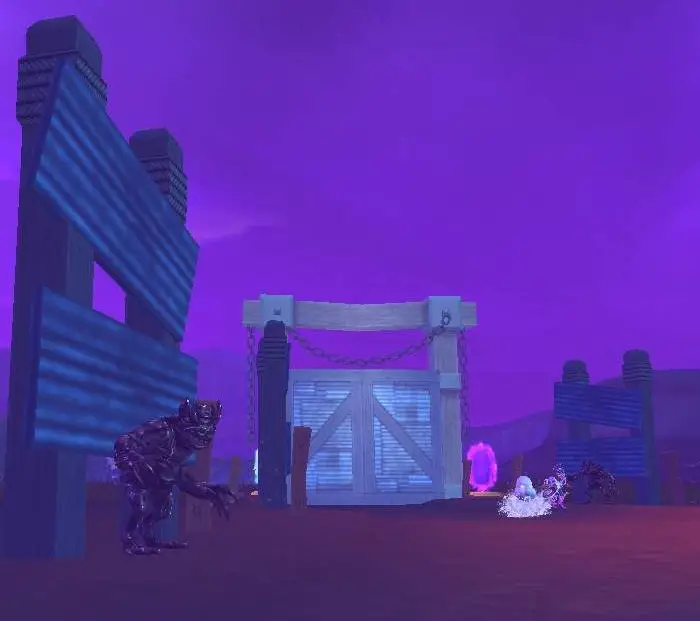
- Objective: The primary goal is for all players in the team (usually a group of four) to locate and interact with four distinct Idols scattered around a specific area of the dungeon.
- Simultaneous Interaction: Success depends on all players clicking or interacting with their respective Idol at the same time. This synchronization requirement adds a layer of challenge, as it requires communication and coordination among team members.
- Activation of Portals: Once all four Idols are activated simultaneously, portals to minions or other dungeon challenges are unlocked. These portals activate portals to minions battles
Nightmare Dungeon Guide
Overview of Minion Encounters
In the Nightmare Dungeon, Minion Fights are critical obstacles that players must overcome to progress. These fights are accessed through four different teleporters, each leading to a unique minion encounter. Successfully defeating these minions is essential for collecting idols required to unlock further sections of the dungeon and ultimately challenge the final boss, Malus.

Minion Cheats and Strategies
Each minion encounter is unique, with specific cheats that require tailored strategies to overcome:
- Koala (Blue Teleporter): This minion does not allow continuous buffing beyond two rounds. It’s recommended to blade the first round and then faint the second round or vice versa, and then hit with a high-pip spell.
- General Strategy for All Minions: The common strategy involves trap stacking with faints and regular traps or using frenzy into your kill shot. Specific encounters might also require countering utilities like heal over times (HOTs), dots, blades, weaknesses, traps, and shields with multiple copies of counter spells.
Detailed Guide for Each Minion
Koala (Blue Teleporter)
- Cheats: The Koala applies restrictions on buffing beyond two rounds.
- Strategy: Players should opt for a quick buildup of blades and faints within the first two rounds before executing a high-pip spell to finish off the Koala. Death school players should avoid this minion due to its tendency to shield against death attacks.
Dingo, Koala, and Other Minions (Yellow, Green, Purple Teleporters)
- Dingo (Yellow Teleporter): This minion is known for being particularly challenging due to its dual-school nature and challenge mode cheats, including significant mantles and high-resistance cheats. The strategy involves using bubble changes and five-pip hits from all players to quickly overcome the Dingo in round one.
- Koala and Other Minions (Green and Purple Teleporters): Similar to the Blue Teleporter’s Koala, these minions can be dealt with by employing a strategy of trap stacking and leveraging high-pip spells. The Green and Purple teleporters’ minions follow a similar cheat pattern to the Blue Teleporter’s Koala, with specific instructions to manage buffs and debuffs within a limited number of rounds.
Specific Strategies and Notes
- General Minion Fight Strategy: For all minions, including those encountered through the Yellow, Green, and Purple Teleporters, the overarching strategy involves a quick buildup of offensive spells within the cheat limitations. This often means prioritizing high-pip spells and managing any debuffs or shields the minions may apply.
- Alternative Pathways and Cheat Countering: Understanding the specific cheats of each minion and countering them effectively is crucial. This may involve using specific spells to counter heal over times (HOTs), dots, or shields the minions apply.
Understanding the Maze Layout
The maze within the Nightmare Dungeon is constant in its overall layout; however, what changes during each entry are the barricades that block certain pathways. This necessitates players to memorize alternative routes to reach their desired boss fights. The maze is divided into sections corresponding to different teleporters, which lead to specific boss fights. Notably, the blue and purple teleporters have similar pathways, as do the yellow and green ones. The only distinction is the boss they lead to. Despite the complexity, understanding this pattern simplifies navigation, allowing players to anticipate and adapt to the maze’s challenges effectively.
Strategies for Avoiding Broken Dreams
Broken Dreams within the maze serve as dynamic obstacles that can chase, corner, and even backtrack players, making navigation significantly harder. The key to avoiding these entities lies in understanding their movement patterns and utilizing specific strategies for each section of the maze.

Tips for Using Teleporters Effectively
Teleporters in the Nightmare Dungeon are crucial for navigating to boss fights and managing the maze’s challenges. Here are some tips to use them effectively:
- Identify the Correct Teleporter: Knowing which teleporter leads to your intended boss fight is essential. Blue and yellow teleporters are designated for the Dragon boss, while green and purple lead to the Croc boss.
- Team Coordination: Coordinate with your team to split up efficiently, ensuring that the first two members head towards the Dragon and the others towards the Croc. This division maximizes the dungeon’s completion speed.
- Utilize Marks and Teleports: Players should consider marking locations near teleporters or strategic points within the maze. This allows for quick returns, especially after collecting idols or completing objectives, minimizing the time spent navigating through the maze.
- Adapt to Teleporter Patterns: Since the maze’s barricades change with each entry, adapting to these patterns and choosing teleporters based on the current layout is crucial for efficient navigation.
General Strategy for Boss Encounters
In tackling boss fights within the Nightmare Dungeon, a common strategy involves meticulous preparation and a clear understanding of boss mechanics to devise effective countermeasures. This involves equipping the right spells, gear, and ensuring your team’s roles are well-defined to address the specific challenges posed by each boss. Coordination and communication within the team are crucial, as is the ability to adapt to the dynamic nature of the fights.
The Didgeri-Dragon Boss Fight
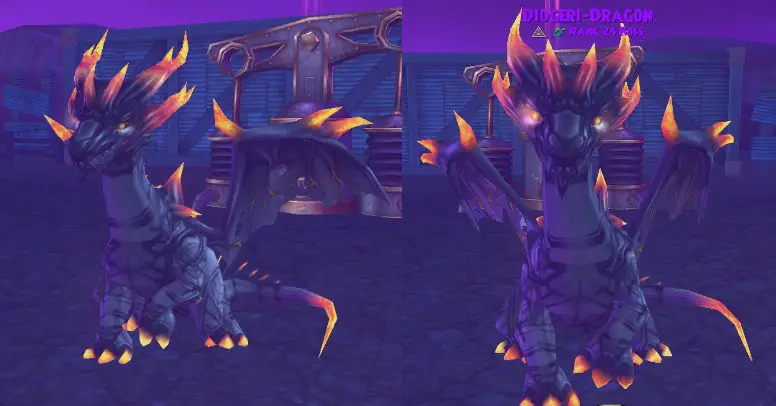
Preparing for the Fight
Preparation for the Dragon boss fight entails setting up your deck to counter the boss’s specific cheats and mechanics. This includes packing spells that can remove or bypass shields, as the Dragon is known to apply them regularly. Additionally, ensuring you have enough high-damage spells and the necessary buffs and debuffs to penetrate the Dragon’s defenses is key.
| Aspect | Details |
|---|---|
| Boss | Didgeri-Dragon |
| Cheats | Shields every round, requiring removal for effective attacks. |
| Preparation | – Deck setup to include shatter TC or one-hit spells for shield removal. – Ensure the support person is ready to counter shields every three rounds or whenever necessary. |
| Support Role | – Buffs the hitter until it’s time to shatter. – Needs to be prepared to remove the Dragon’s shields with shatter TC or a one-hit spell, depending on the situation. – If they are a Myth school player, they can use their main deck shatter for a more consistent shield removal. |
| Hitter Role | – Buffs themselves while waiting for the support to handle shields. – Accumulates 5 to 8 buffs, including different faints, before launching an attack. |
| Attack Strategy | – Coordination between the support person removing shields and the hitter applying sufficient buffs before attacking. – Pay close attention to the Dragon’s secondary school for puzzle symbol identification after the fight. – Collect the token dropped by the Dragon for puzzle setup. |
Boss Mechanics and Cheats
The Dragon boss employs a mechanic where it shields every round, making it essential to have a strategy in place to remove or pierce through these shields. It also has a secondary school that changes, which influences its attack patterns and the type of shields it uses.
Recommended Attack Strategy
An effective attack strategy against the Dragon involves trap stacking and using high-damage spells, coordinated with the timing of shield removal. It’s essential to have a support player ready to shatter or pierce the Dragon’s shields right before the main hitter delivers a powerful attack. Paying attention to the Dragon’s secondary school helps in choosing the right elemental or school-specific traps and buffs to maximize damage output.
Pharaoh Rama-Krok Boss Fight
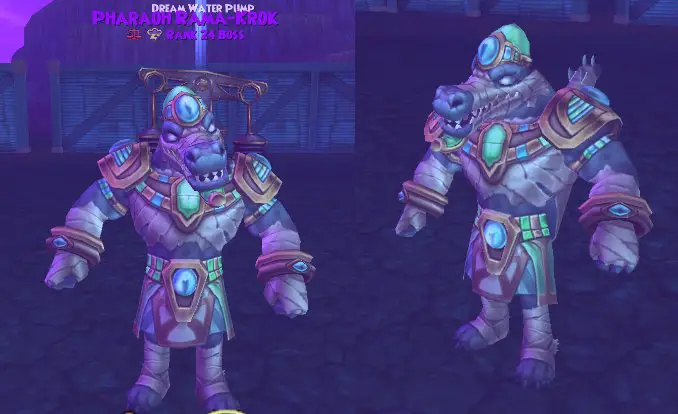
Countermeasures for Croc’s Utilities
The Croc boss utilizes a variety of utilities that can significantly hinder the team’s ability to deal damage, including applying heals over time (HOTs), damage over time (DOTs), blades, weaknesses, and traps. Effective countermeasures include packing spells like cleanse to remove negative effects, pierce or shatter to deal with shields, and specific spells like snow drift for HOTs, ensuring you can continue to apply pressure and damage despite these utilities.
| Aspect | Details |
|---|---|
| Boss | Pharaoh Rama-Krok |
| Cheats | – Applies new counters every two rounds, including HOTs, DOTs, blades, weaknesses, traps, and shields. |
| Preparation | – One person needs to pack every counter to utilities with multiple copies, specifically for heal over times (HOTs) and traps. |
| Support Role | – Responsible for countering the Croc’s utilities. – Needs multiple cleanse Ward treasure cards to remove traps. – Helps buff the hitter in between countering cheats. |
| Hitter Role | – Focuses on accumulating buffs until they have enough to launch a powerful attack. |
| Countermeasures for Utilities | – Requires specific spells to counter HOTs (e.g., Skeletal Pirate for Death, Triton Storm, and Snow Drift for Ice ). – Must have multiple cleanse Ward treasure cards for traps. |
| Effective Attack Strategies | – Attack when sufficient buffs are accumulated and immediately after the support successfully counters the Croc’s utilities. – If a hanging effect is left uncountered, krok may revive. |
Effective Attack Strategies
An effective attack strategy against Pharaoh Rama-Krok hinges on the ability to adapt to the utilities it employs. This involves having team members dedicated to countering the Pharaoh Rama-Krok’s cheats, such as one player focusing on removing shields and another on cleansing negative effects. The main attacker should focus on stacking traps and delivering powerful hits once the Pharaoh Rama-Krok’s defenses are down. It’s crucial to monitor the boss’s school and adjust your elemental or school-specific strategies accordingly.
Collecting Dream Water
Locations and Collection Strategy
- Dream Water is released into the maze’s quadrants upon completing specific boss fights and activating pumps.
- Players must navigate the maze to find puddles of Dream Water. These can be identified by looking for pipes with puddles underneath them, indicating Dream Water presence.
- It’s essential to mark locations wisely and use teleportation to efficiently collect and deposit Dream Water, especially considering the mana cost and the challenge posed by Broken Dreams in the maze.
Delivering Dream Water to Sleepers
- A total of 12 Dream Waters are needed to neutralize the sleepers at Malice’s location.
- Players can peek through gaps in the walls to identify if a pipe has a puddle, signaling Dream Water availability.
- Once collected, Dream Water must be delivered to the sleepers in the Malice fight area to progress towards the final boss encounter.
Puzzles and Tokens
Identifying and Solving Dungeon Puzzles
- The dungeon features puzzles that require setting symbols in specific teleporters based on the secondary school of the bosses defeated (Dragon and Krok).
- Correctly identifying the secondary school of these bosses and the tokens they drop is crucial for setting the puzzles correctly.
- Activation of pumps, following the placement of tokens and setting the right symbols, releases Dream Water and is a critical step towards completing the dungeon.
Collecting and Using Tokens
- Upon defeating the Dragon and Croc bosses, they drop tokens ( Idols ) that are essential for solving the dungeon puzzles.
- One person needs to stay at the pump or mark a location to ensure the token’s prompt use after collection.
- Tokens are used in conjunction with setting the correct animal and school symbols in the blue and yellow (for Dragon) and green and purple (for Croc) teleporters.
- Properly setting the puzzles and activating the pumps facilitates the flow of Dream Water necessary for progressing towards the final boss fight against Malice.
The Final Showdown with Malus
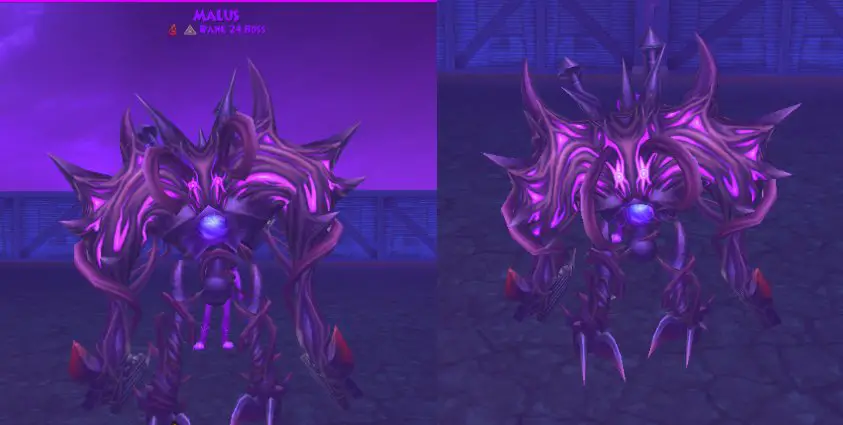
Preparing for the Fight
- Preparing for Malice involves ensuring your team has high accuracy to counteract his mantle cheats, including Fiery Giant and Lava Lord, which apply mantles.
- It’s critical to have a niche build that allows for brute force through these cheats, particularly if your strategy involves not fizzling through mantles.
- The team should focus on having enough buffs and accuracy to overcome Malice’s RNG-based fight mechanics effectively.
| Cheat | Description | Counter Strategy |
|---|---|---|
| Black Mantle | Casts a -55%, 3 Pip Black Mantle randomly at the beginning of a round. | Have high accuracy gear or spells ready to counteract the impact of the mantle. |
| Choke | Random application at the start of a round, disrupting spell casting. | Have Stun Blocks |
| Efreet | Deals 1,000 damage to the Wizard with the lowest health at the start of a round. | Manage team health to ensure the intended target can withstand the hit, or strategically adjust health levels so the least vulnerable player is targeted. |
| Monster Mash | Deals 1,170 damage to the Wizard with the highest health at the start of a round. | Similar to Efreet, manage health levels wisely; consider using shields or resist gear to mitigate the damage. |
| Muzzle | Applies a -25% Damage Charm and a -45% Accuracy Charm on all enemies | Ensure communication within the team to adjust strategies on the fly when a player is muzzled. |
| Tower Shield (Sun -90%) | Applies a powerful -90% Tower Shield at the start of a round. | Use pierce or shatter spells to remove the shield before launching major attacks. |
| Flames of Hatred Aura | Randomly at the end of a round, casts an aura that must be removed by targeting Malus. | Target Malus with any spell (including 0 Damage Star version of Supernova) to remove the aura and prevent his revival or bolstering cheats. |
| Supernova | If targeted while his aura is active, Malus removes the aura himself. | Intentionally target Malus with low-impact spells to trigger this self-removal of his aura without wasting significant resources. |
Understanding Malice’s Cheats
- Malice employs several cheats that can significantly impact the fight. These include:
- The ability to mantle players, adding an RNG element to the fight.
- Using spells that inherently give players a mantle, complicating direct attacks.
- He targets the player with the highest HP for specific attacks and uses an Efre on the player with the lowest HP, which has a -95% effectiveness, making team health management crucial.
- Malice can revive if killed while his special aura is active, necessitating a strategy that involves either avoiding this aura or ensuring it’s not active upon his defeat.
Strategy for Overcoming Malice
- The overarching strategy involves careful management of team health to avoid the detrimental effects of Malice’s targeted cheats.
- Players should trap stack Malice as focusing on him with traps and targeted spells removes his aura, preventing his revival cheat.
- Utilize shatter effectively to deal with Malice’s -90 shields and ensure the team’s hitter doesn’t have the lowest health to avoid the Efre cheat.
- The team must maintain high accuracy to prevent fizzles from mantles and ensure all buffs are in place before attacking. It’s recommended to have multiple copies of crucial spells like shatter to counteract potential fizzles.
- The strategy heavily relies on the team’s ability to adapt to Malice’s cheats, with a significant focus on trap stacking, accurate hitting through mantles, and managing health levels strategically to minimize the impact of targeted cheats.
Nightmare Dungeon Drops
The Nightmare Dungeon Drops the new best Gear for level 170 known as “Dream Reaver Gear“.
| Gear Type | Description | Comparison/Notes |
|---|---|---|
| Wands | Best for PvE across all schools. Offers a new stat (accuracy) in addition to other benefits. | Compared to Aon wands, these are slightly better, trading a square jewel for a tear but adding accuracy. |
| Robes | Main robe is considered an “insane upgrade.” Offers additional Pierce and other stats. | For fire school, it provides two more Pierce compared to Aon robes, making it significantly better. |
| Item Cards | Gear set includes powerful item cards, such as 40 blades for fire and 35 item card traps from boots. | These item cards are highlighted as very beneficial for PvE, offering significant advantages. |
| Defensive Set (Dream Stalker Gear) | Well-rounded gear that might be used in PvP setups. Offers a balance of stats without sacrificing accuracy for critical. | Compared to Burrower gear, it is preferred for not giving up accuracy. Suitable for schools with 80% accuracy or lower. |
| Legacy Gear Comparison | New gear competes with or outperforms legacy gear that was previously considered best for its level. | Dream Reaver gear is mentioned as slightly better than Meer gear, offering a trade-off between HP, resist, and Pierce/damage. |
The rest of the Dream Reaver gear can be obtained from other bosses in Wallaru
| Boss Name | Description | Rewards |
|---|---|---|
| Freddy Fight in the Dreaming | Involves a chromatic dispel cheat. Strategy: cleansing, mass fainting, and using incindiate to defeat Freddy in one turn. | Drops new jewels and a ring considered the best for both PvP and PvE at level 170. |
| Mr. Montgomery | Requires defeating the boss 10 times to unlock crafting recipes. Involves two minion fights and a cheat where the boss becomes immune. | Unlocks crafting recipes for decks and new Square jewels that provide significant HP. |
| Crash the Bandit Coot | A side quest involving Lady Corta must be completed 20 times to unlock the amulet recipe. | The amulet offers an extra Circle slot and a triangle socket. |
| Fleet Fight | Requires a different approach using gambits to activate a cannon for significant damage. Strategy: linking and triple-blading for cannon shots. | Completing this fight 15 times unlocks the crafting recipe for the athame, sword pins, and triangle jewels. |
